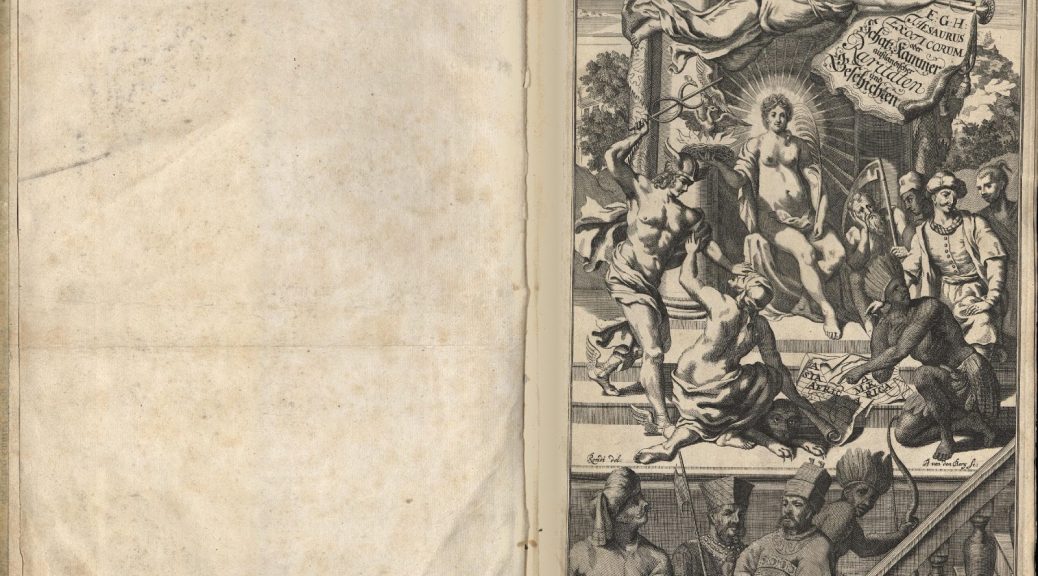Post contributed by Janice Hansen.

No one can describe the focal points of the Jantz Collection better than Harold Jantz himself. He described the better part of his book-collecting career as “amateur,” marked by “casual collecting according to personal tastes and interests.” Jantz did not consider himself a “bibliophile,” but rather a “reader and an explorer” (Jantz, xxii). This description rings particularly true when considering the Harold Jantz Collection as a whole. Duke University acquired the Jantz Collection in 1976. With approximately 10,500 volumes, it provides one of the most comprehensive and unique explorations of German Baroque literature in the United States. The collection highlights the areas in which Harold Jantz was most interested, including German Americana, Faustian and Goethean material, the occult, and more. In addition to these volumes, the David M. Rubenstein Rare Book & Manuscript Library holds the personal papers of Harold Jantz; a collection of 170 early manuscripts, music manuscripts, and autograph albums; and a graphic art collection consisting of engravings, etchings, and other prints with dates ranging from the 1400s to the 1800s.
The manuscript fragment through which I got to know the Jantz collection was used to bind Eberhard Werner Happel’s 1688 Thesaurus Exoticorum, a fascinating piece in and of itself. There are a number of reasons why this particular volume would have been of great interest to Harold Jantz, the great explorer of German Baroque literature. Happel’s work is a compendium of information in the German tongue. It collected news and curiosities, ordering these snippets of information and illustrating them profusely with intricate woodcuts.

Works like these have only begun to garner scholarly attention in recent years, but Jantz saw the value in the lesser-known authors and works. The Thesaurus Exoticorum is peppered with information about the Americas, placing it in the genre of Americana, another of Jantz’s collecting focal points. Happel considered reading to be a replacement for experience, this text thus allowing readers more knowledge in reading it than with many years of world travel. The icing on the cake for such a Baroque and Americana-filled work is then its fine binding.

But what Jantz likely didn’t know, was just how unique of a binding it truly was. Using leaves of unwanted, outdated, or worn manuscripts to bind other works was a common bookbinding practice in the sixteenth and seventeenth centuries. This practice gave new life to materials that would otherwise be discarded. The manuscript waste on Happel’s work has its own story to tell, and a fascinating one at that. Continue reading Hidden Treasures in the Harold Jantz Collection


